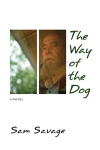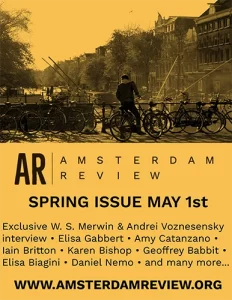The Way of the Dog
Sam Savage’s narrator Harold Nivenson is, in Harold’s own words, a minor artist. Yet The Way of the Dog, though a slim novel, is anything but a minor work.
Sam Savage’s narrator Harold Nivenson is, in Harold’s own words, a minor artist. Yet The Way of the Dog, though a slim novel, is anything but a minor work.
Nivenson is an old man on what appears to be the verge of death, who spends his time ruminating about his failed artistic life. As he mentally racks up his failures, he also charts the shifting personality of his neighborhood; once rundown and reserved for eccentric artists, it is now being gentrified, its personality glossed over. This book contains layers of interiority—Nivenson’s own aging mind, the interior spaces of the mansion he holes himself up in, the mysterious interior lives he imagines for the neighbors he watches from his windows. Nivenson is a voyeur, and we become a voyeur of his mind too.
Anyone who has ever attempted to make it in the art world will sympathize with Nivenson’s grumblings about never making it, about a life of wandering until he chooses to buy a house to “ground” himself, of living in the shadow of the nemesis masquerading as his friend. On first glance, Nivenson appears to be a crotchety sort: disgusted with his son, who wants to liquidate his artwork; contemptuous of Moll, the overweight caretaker of the house; and bitter toward his former friend, colleague, and rival Peter Meininger, now dead. But a closer, more careful read reveals a philosopher, a word artist, a sad old man with an eye for detail and a fondness for these people he so dismisses. His greatest fondness is toward his dead dog Roy, who pulled him out of his depression. “I went from a socially excluded, potentially suicidal person to a marginal character with a dog.” In a sad but amusing way, reflecting on the failure he had as a visual artist, Nivenson marginalizes himself as a character in his own life story.
One of the highlights of the book is Nivenson’s relationship with Moll, who at first glance appears to be his caretaker. It is a visceral, delicate, and raw relationship. There is perverse beauty in his depiction of Moll, even through his apparent disgust of her: “You look like Cinderella’s sister,” he remarks at one point.
Though much of the book is constructed of Nivenson’s musings, Savage carefully reveals surprises that we realize have existed all along—it’s just that Nivenson has not bothered to point them out so obviously. Savage has carefully constructed this narrative, swooping in and out of Nivenson’s thoughts, following the random, spinning trajectory of an old man’s mind. Savage forces us to contemplate life, and to ask: is this what it is like for a man on the verge of (perhaps) death? To account for his failures and anxieties and resolutions? To obsess over the suicides of John Berryman and Virginia Woolf? Would we do the same in Nivenson’s place? Are we all just failures in our own stories? But amidst the philosophy and self-torture, there is charm and dark humor in these pages as well, such as when Nivenson reflects that ugly people should be hidden away or how he imagines the lovemaking of his neighbors, “the tall people . . . will be slow and languorous, giraffes coupling in the hot African night.” Savage is undoubtedly a quotable writer.
Though Nivenson is a self-proclaimed minor artist, this book-length contemplation is his greatest work of art. “We can’t tell our own story,” he muses at one point, “We can’t even live it,” yet as a narrator he manages to tell his story, and as a reader I buy it.
Savage navigates the reader among dreams, memories and daily movements—eating, sitting, listening. In many ways, The Way of the Dog is reminiscent of Savage’s first novel, Firmin. Nivenson, like Firmin, is a memorable character bound to join the ranks of unforgettable literary characters.
When you put down this book, you’ll want to think about it. And then think about your own life, and soon you may find yourself in a Nivenson moment of self-reflection and critique, and then you may find yourself picking up the book again, scanning the pages for another mention of Roy or Moll. It will soon become apparent that you are now a part of Savage’s world, which is the great triumph of any piece of literature, and you will then realize that you have exchanged something with Nivenson that cannot quite be named.





